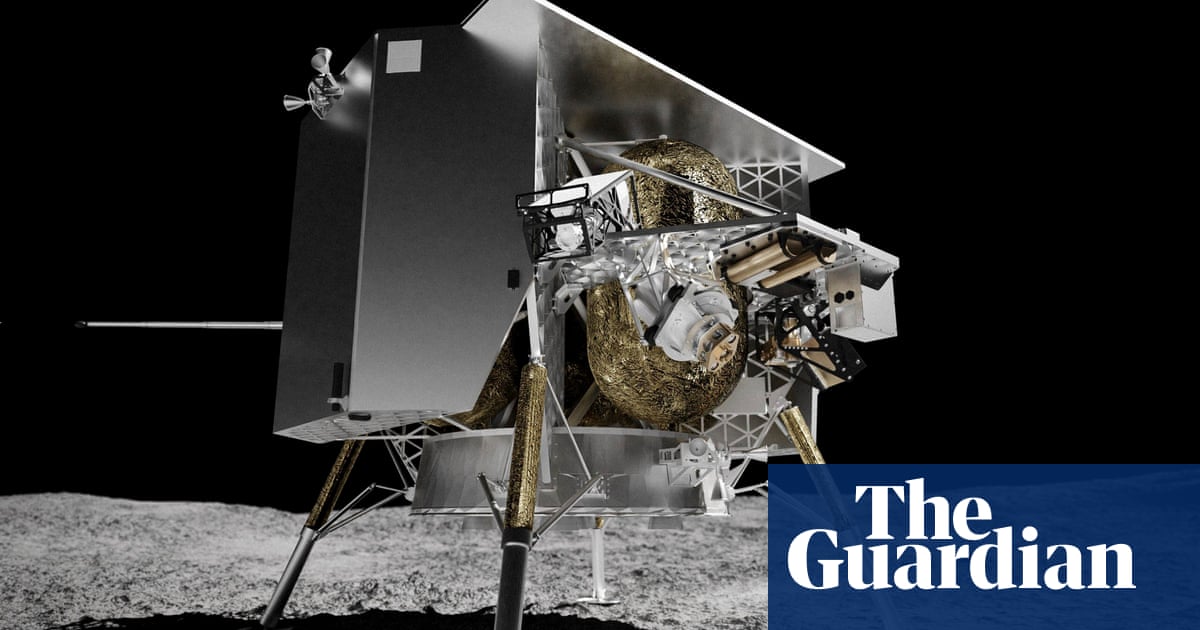The ill-fated Peregrine moon lander is headed towards a fiery reentry into the Earth’s atmosphere.

A spacecraft from the United States that experienced a malfunction while en route to the moon is expected to descend back to Earth on Thursday evening and disintegrate in a fiery explosion above the southern Pacific Ocean.
The Peregrine lander’s fuel leak initially made it difficult for space agencies to monitor the spacecraft’s trajectory. However, as the leak has decreased in recent days, its course has become more foreseeable.
According to the most recent calculations, the lander is expected to re-enter Earth’s atmosphere around 2100 GMT on Thursday. The majority of the spacecraft will be destroyed as it passes over the eastern region of Australia, between New Caledonia and Fiji. The nearest inhabited area is Aneityum, which is the southernmost island of Vanuatu.
Angus Stewart, the UK Space Agency’s head of space surveillance and tracking, stated that the main difficulty with this particular object was determining its exact orbital position because of the initial release of fuel onboard. However, since the venting has stopped, the object’s orbit has become more stable and it has been successfully tracked as Peregrine.
Forecasting the location and time of descent for space equipment is especially challenging for satellites in close orbit because they typically skim the atmosphere multiple times before disintegrating. However, due to the steep angle of descent for the Peregrine lander, there is less uncertainty involved.
Jonathan McDowell, an astrophysicist at the Harvard–Smithsonian Center for Astrophysics in Cambridge, Massachusetts, stated that you gain a much clearer understanding of the exact location and timing of its re-entry.
It is uncertain how much of the spacecraft will remain intact during re-entry. This is because Peregrine is moving at a higher speed compared to most satellites, resulting in more heat being produced as it passes through the atmosphere. However, the steep angle of its descent means there is less air resistance to overcome.
Similar to all spaceships traveling through a crowded area in low Earth orbit, Peregrine does carry a potential risk for other spacecraft. However, the likelihood of a collision is low. “After examining information from our international collaborators, we have not found any indication of Peregrine posing a threat to other objects in space,” stated Stewart.
On January 8th, Peregrine successfully launched from Cape Canaveral in Florida using a Vulcan Centaur rocket. The launch went smoothly, which is not always the case for a rocket’s first flight. However, Peregrine experienced a fuel leak shortly after being released from the upper stage of the rocket.
Ignore newsletter advertising
after newsletter promotion
It is unclear what caused the leak, but Astrobotic, the company in Pittsburgh that constructed the lander, suspects that a valve getting stuck resulted in a sudden increase in helium pressure, causing the oxidiser tank of the spacecraft to rupture. This loss of propellant made it impossible for the lander to make a smooth landing on the moon, which would have been a first for a private company. Instead, the lander was forced into a lunar orbit before being pulled back towards Earth and ultimately colliding with it.
Astrobotic worked with Nasa and other US agencies to ensure as safe a re-entry trajectory as possible. To nudge Peregrine towards the South Pacific, the spacecraft performed 23 short burns with its main engine. Peregrine then rotated so the force from the leaking propellant helped steer the doomed spacecraft towards the ocean.
While the risk from Peregrine is minimal, there are still concerns about the potential danger of space debris as launch frequency rises. According to Andy Lawrence, a professor of astronomy at the University of Edinburgh, satellite launches are growing at an exponential rate and there is a possibility that some spacecraft may not fully disintegrate upon reentry. Additionally, there is a growing concern about small fragments potentially colliding with aircrafts.
Source: theguardian.com


